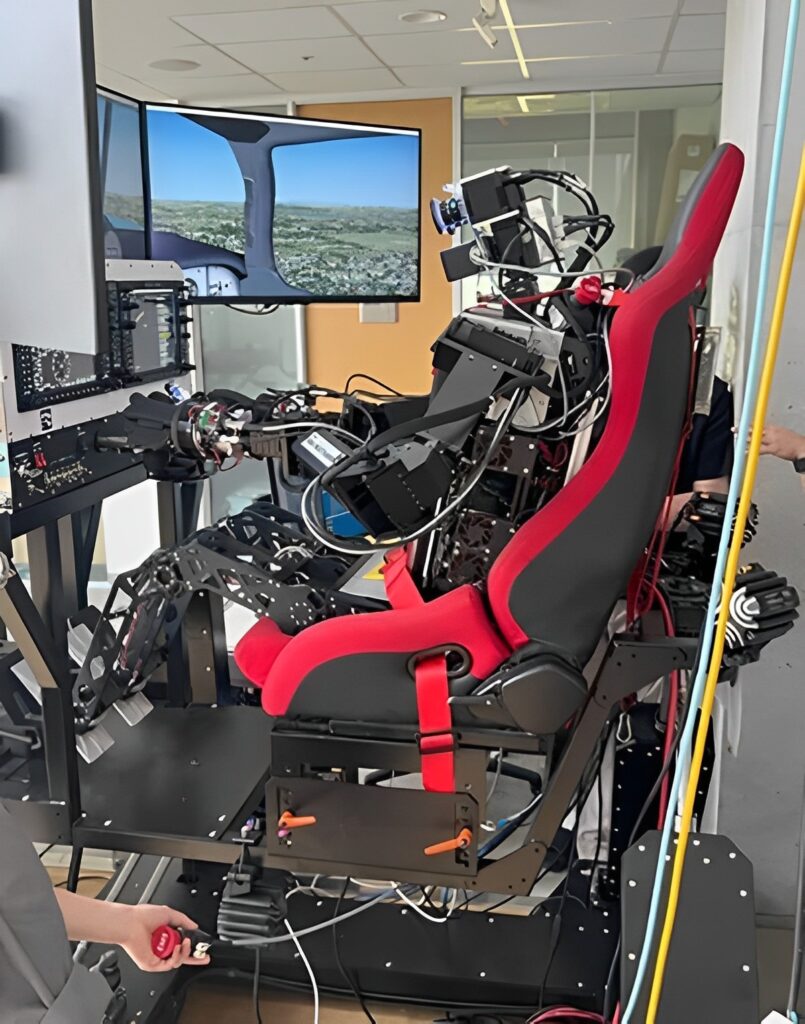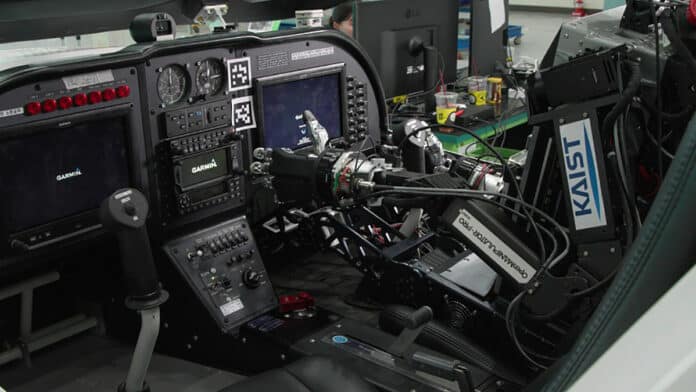A team of researchers at the Korea Advanced Institute of Science & Technology (KAIST) has developed the world’s first humanoid robot pilot that can fly an aircraft without modifying the cockpit.
Called PIBOT, the humanoid robot can understand manuals written in natural language and fly a plane on its own. The robot could sit in a real cockpit and operate the various pieces of equipment without modifying any part of the aircraft. It utilizes AI and robotics technologies to memorize flight charts and emergency protocols.
The KAIST team says incorporating ChatGPT technology provides PIBOT with a distinct advantage. This means the humanoid pilot can already remember Jeppeson aeronautical navigation charts from all around the world, which is impossible for human pilots to do, and fly without error.
Also, the PIBOT has memorized the full Quick Reference Handbook (QRF), which contains all the procedures applicable for non-normal and emergency conditions – such as a loss of electrical power or system malfunctions – in an easy-to-use format. The robot can respond immediately to various situations, as well as calculate safe routes in real-time based on the flight status of the aircraft, with emergency response times quicker than human pilots.

While existing robots usually carry out repeated motions in a fixed position, PIBOT can analyze the state of the cockpit as well as the situation outside the aircraft using an embedded camera. Because it’s a humanoid robot, PIBOT can accurately control its robotic arms and various cockpit switches, even during harsh turbulence.
Currently, the humanoid pilot can carry out all operations from starting the aircraft to taxiing, takeoff and landing, cruising, and cycling using a flight control simulator. The KAIST team plans to use the humanoid pilot to fly a real-life light aircraft to verify its abilities.
“Humanoid pilot robots do not require the modification of existing aircrafts and can be applied immediately to automated flights. They are, therefore, highly applicable and practical,” lead researcher David Hyunchul Shim said in the press release. “We expect them to be applied to various other vehicles like cars and military trucks since they can control a wide range of equipment. They will particularly be particularly helpful in situations where military resources are severely depleted.”
The project started in 2022 and is expected to be completed by 2026. The researchers are also considering commercialization strategies for both military and civil use.
